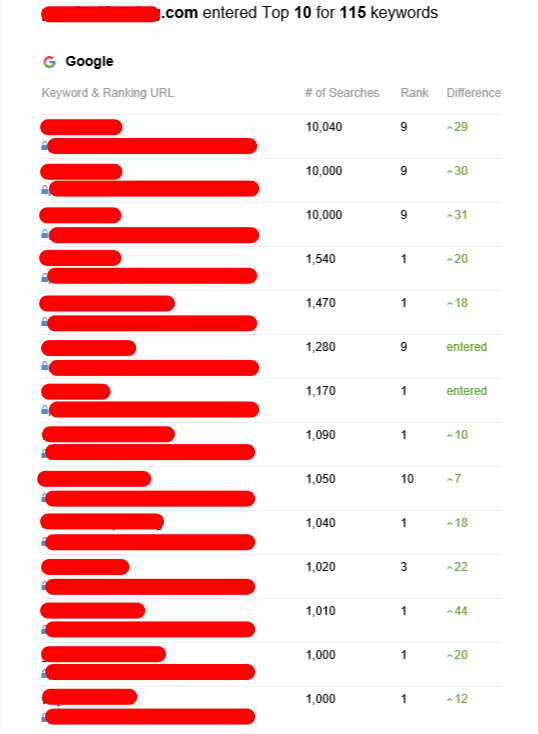Backlink Tier Explained In Fewer Than 140 Characters

Tiered Link Building - How to Avoid a Google Penalty

Tiered link building is an effective tool that can assist websites to improve their search engine rankings. However it is important to use it in a manner that is safe. Otherwise, it could lead to a Google penalty.
Tiered link building involves the use of multiple levels of backlinks in order to improve a website's rank. Many SEO experts and link-building agencies employ this method.
First-tier links
Tiered link building can be a powerful SEO strategy that can help improve your search engine rankings. It is important to know how to use tiered links properly to avoid penalties from Google. The use of tiers in your backlink pyramid is a method of doing this. In addition, you could utilize other methods such as editing your niche and broken link building to help boost your SEO efforts.
In a tiered method, the first tier should be comprised of links from sites with high-quality that have more PageRank and higher domain authority than your own. This gives you the highest chance of ranking over the long run. Getting links from low-quality sites can affect your rankings and raise red flags to Google. Avoid linking to sites that are not related or that only have hyperlinks.
You can also develop your first level making use of wikis and forums that have lots of user-generated content. This is an excellent method to obtain high-quality links that are relevant and relevant. However, you should remember that these links might not transfer as much link juice as those on a high-quality website.
You can also utilize an information source like HARO to get a list of subjects that journalists are seeking information on. This can be a great way to build your first link tier in a natural way without breaking any rules. Be sure to only link to sites that are trustworthy and are related to your field.
Second-tier links
Tiered link building is an approach employed by website owners and SEO firms to increase search engine rankings. However, it's a risky method that could cause Google penalties. Tiered links are backlinks that link to third-party sites that give your website authority. These backlinks can be used to transfer link authority to your primary websites so that they get higher rankings in SERPs. But, this strategy can be time consuming and expensive. It can also be difficult to get to the tipping point in search results on engines.
Tier 2 links are likely to be lower quality than the first tier but can still help boost organic ranking and improve domain authority. They can also make Tier 1 links more effective by increasing their value. tier 2 link building are either dofollow or do not follow, however dofollow is the one with the highest priority.
There are numerous ways to create Tier 2 links, such as guest posting and citations in niche-based articles. Additionally to that, you can use article directories and link roundups to create these links. It is crucial to use referring URLs that are relevant to the context. In addition, you should avoid using low-quality backlinks, which can be interpreted as spam by Google. Such techniques can quickly turn into a black-hat strategy that could result in penalties.
Third-tier links
Tiered link building is a powerful tool that assists SEOs in ranking their websites in the results of searches (SERPs). However, it could also be risky if not done correctly. If Google finds that the use of tiered links, it could penalize the site or even remove it from search results altogether. There are ways to avoid such a fate.
The third tier is where things start to get messy. Here, marketers utilize third-party tools for creating backlinks at scale. They can be blog posts, directories of low-quality bookmarking sites, wikis, as well as other content that is created by users. These backlinks are designed to boost the PageRank and authority of your first-tier link.
They can be traced back to the source, which makes them a bit more risky than natural counterparts. Additionally, they're not as effective in boosting PageRank. Google's algorithm has evolved, and low-quality (even nofollow) links are losing their value.
To avoid this Marketers should be cautious when creating their third-party backlinks. They should only utilize reputable third-party service providers with excellent track records. It is also recommended to avoid using any automated tools since they could cause issues. Google may penalize you if it finds automated tools. This can be a major impact on your rankings. It's important to choose an SEO agency with experience in tiered link building.
Fourth-tier links
Tiered link building involves the creation of an pyramid. This method allows websites with more authority that are more authoritative, to pass on link juice to lower-authority pages which then rank for certain keywords. This method can increase site traffic and rankings over time. It is essential to remember that using tiered links on your entire website or a single page can be risky.
The best way to avoid this is to ensure that your tier-2 backlinks come from multiple sources. If your tier-2 backlinks are all from one source, Google may detect it and penalize your website. Avoid linking to spammy websites, as they will damage your website's reputation.
In addition to guest blogging and tier 2 links, they can be obtained through paid advertisements or by sending quality content to high-authority websites. You can also submit your article to HARO. The service sends emails to journalists about a range of topics, and you can provide the information they need for their articles.
However this method of building links is not a long-term strategy. Google's algorithms are continuously upgraded, and it's becoming increasingly difficult to make links from poor quality sources. Additionally Google's algorithms are more effective in detecting automated. It is therefore likely that tiered linking will disappear eventually.
